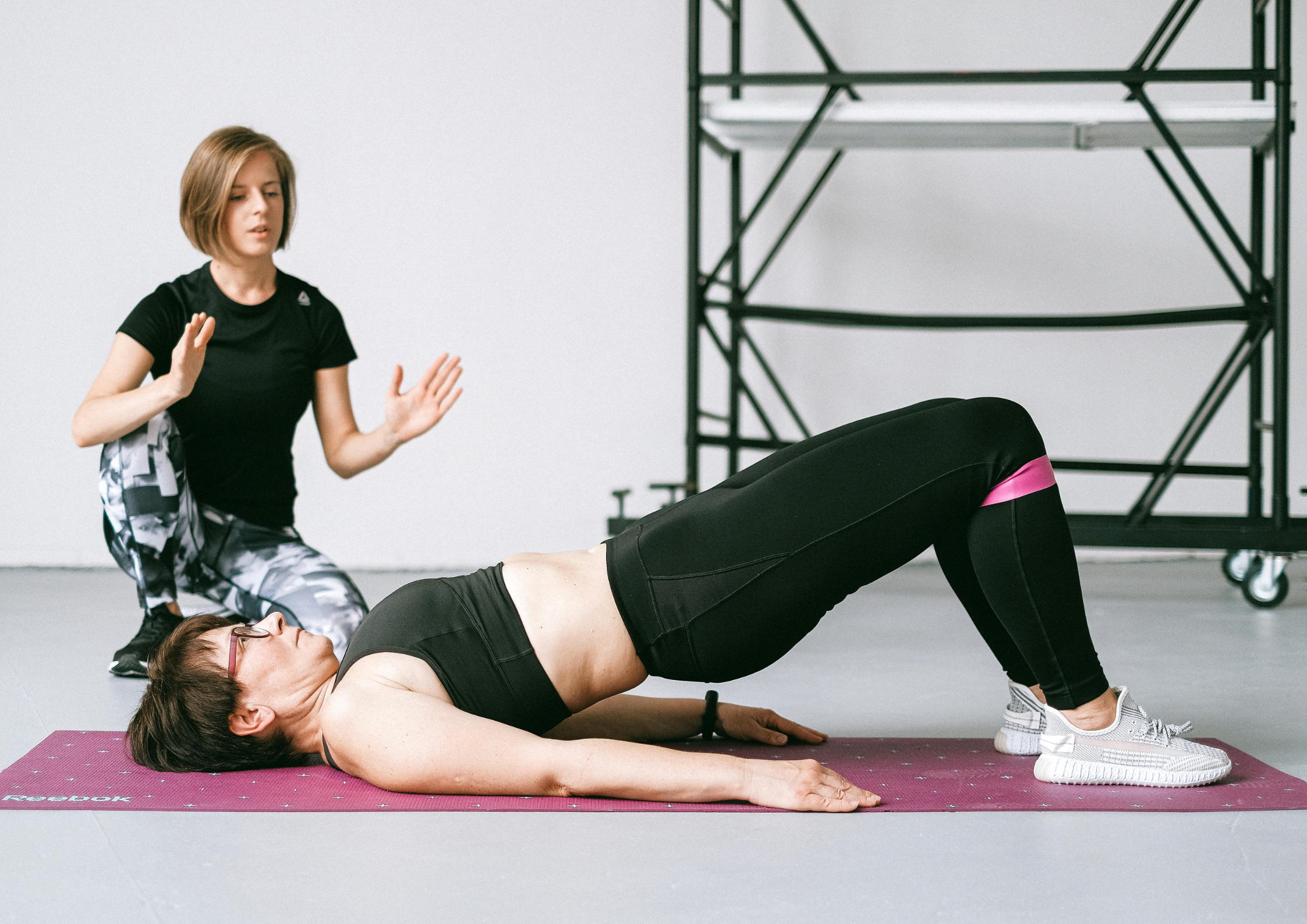Pelvic floor therapy can be life-changing.
For many women, it’s the first time they’ve felt a sense of control over their body in years, fewer leaks, less heaviness, and confidence returning with every sneeze or squat.
But what comes next?
The truth is, healing doesn’t stop when the sessions end.
Think of your pelvic floor like a team of muscles that just finished rehab.
They’re functional, yes, but they still need conditioning, support, and regular check-ins to stay strong.
So if you’ve wrapped up pelvic floor therapy and you’re wondering how to maintain your progress, this guide is for you.

1. Keep the Basics in Your Daily Routine
Remember those exercises your therapist taught you, the deep breathing, the gentle Kegels, the posture checks?
They weren’t just a temporary fix.
They’re more like long-term maintenance tools, much like brushing your teeth or stretching your back after a long day.
“Maintenance is everything. Just five minutes a day of consistent pelvic floor engagement can make a major difference,” says Dr. Bri Grogan, PT, DPT, and founder of FEMFusion Fitness.

One simple way to support this habit is by making your environment pelvic-floor friendly.
If you sit for long hours at work or home, consider using a Posture Support Cushion to encourage spinal alignment and relieve pelvic pressure throughout the day.
A small change in how you sit can actually make a big difference in how you feel by the end of the day, especially for anyone managing prolapse or pelvic tension.

2. Watch Out for the Everyday Saboteurs
Your pelvic floor isn’t just affected by how you move, it’s also influenced by how you eat, sit, poop, and even cough.
Common culprits that undo progress include:
-
Straining on the toilet due to constipation
-
Heavy lifting with poor form
-
Slouching for hours
-
Chronic coughing without support
-
High-impact exercises before you're ready
“Awareness is key. It’s not about living in fear, it’s about knowing what puts strain on your system so you can work around it,”
says Michelle Lyons, international pelvic health physiotherapist.
 For days when you know you’ll be on your feet a lot or traveling, it helps to have subtle tools for support.
For days when you know you’ll be on your feet a lot or traveling, it helps to have subtle tools for support.
A discreet option like the Bladder Control Patch can offer temporary relief from urgency or leaks, giving you peace of mind when routines get thrown off.

3. Stay Active — But Train Smarter, Not Harder
Movement is one of the best things you can do to support your pelvic floor.
But not all exercises are created equal, especially after you’ve been through therapy.
Swap crunches and high-impact workouts for:
-
Bridge poses
-
Modified planks
-
Squats with proper breath coordination
-
Wall sits or resistance band work
“Pelvic floor-friendly movement is about creating pressure strategies that protect, not overburden, your core and pelvic muscles,”
says Dr. Sarah Ellis Duvall, DPT, of Core Exercise Solutions.
If you feel unsure whether you're activating the right muscles, or you’re starting to lose connection, a little help from technology can go a long way.
The EMS Pelvic Floor Massager uses gentle electrical pulses to retrain your brain-body connection, especially useful when you’re tired, postpartum, or easing back into fitness after a break.

4. Don’t Overlook Food, Fluids, and Bathroom Habits
While pelvic floor work often focuses on muscles, we can’t ignore the role of digestion, hydration, and bladder health.
What goes into your body, and how it comes out, directly affects pelvic function.
A few things to keep in mind:
-
Stay well-hydrated, but don’t overdo it
-
Get enough fiber (think fruits, veggies, oats, flaxseed) to avoid constipation
-
Limit bladder irritants like caffeine, artificial sweeteners, and alcohol if urgency is an issue
🔎 A 2019 review in Current Urology Reports emphasized the strong link between dietary habits and urinary incontinence, especially in women managing both bladder and bowel symptoms.
Bottom line? Your pelvic floor doesn’t work in isolation, what you eat, drink, and digest all matters.

5. Listen to Your Body — and Check in When You Need To
Symptoms don’t always return in full force.
Sometimes they creep back in quietly: a little heaviness after a long day, a new leak during exercise, or a subtle disconnect from your core.
Don’t wait until things get bad to reach out.
“Think of your pelvic health like dental health, you don’t stop brushing just because your last cleaning went well,”
says Dr. Laura Meihofer, PT, DPT.
“And if something feels off, schedule a tune-up. Don’t tough it out.”
A brief refresher with a pelvic floor therapist, even once or twice a year, can help you catch small issues before they become bigger ones.

6. Mind Your Stress — Your Pelvic Floor Feels It Too
Stress doesn’t just live in your head.
It lives in your jaw, your neck, your shoulders, and yes, your pelvic floor.
When we’re anxious or overwhelmed, we often hold tension in our core without realizing it.
Over time, this can lead to tightness, dysfunction, or pain, even if you’ve done everything else right.
Helpful tools include:
-
Breathwork
-
Meditation
-
Gentle yoga or stretching
-
Journaling and body awareness techniques
As Isa Herrera, MSPT, puts it:
“Your pelvic floor doesn’t exist in isolation. Emotional stress can tighten or weaken it just as much as physical strain.”
So if you’re doing all the exercises and still not feeling quite right, it might be time to check in with how you’re feeling mentally and emotionally, too.

Final Thoughts: Healing Is a Practice, Not a Destination
Finishing pelvic floor therapy is something to be proud of, but it’s not the final step.
It’s the foundation for a new, more connected relationship with your body.
Some days you’ll feel strong and steady.
Other days, not so much.
That doesn’t mean you’ve failed, it means you're human.
Real progress is about showing up consistently, tuning in, and responding with care.
You don’t need to be perfect.
You just need to be aware, gentle with yourself, and open to what your body needs.
Because this isn’t about returning to the old you.
It’s about building a stronger, wiser version, one breath, one rep, one mindful moment at a time.




Share:
[GemPages] Bladder Support Supplement - GA Advertorial
Bladder Leaks & Prolapse Don’t Mean the End of Active Living